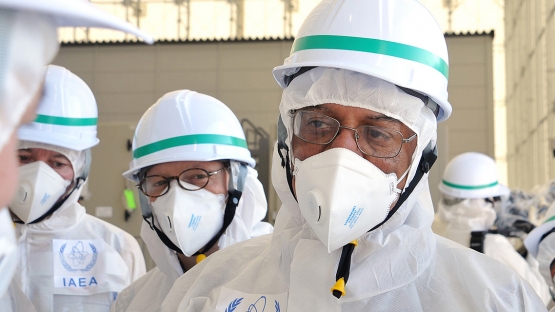Japan has provided the IAEA with a report summarizing the events and highlights on the progress related to recovery operations at the Fukushima Daiichi Nuclear Power Station. The IAEA had provided its assessments, which is contained in full at the end of the report.
At the time of writing this report, TEPCO had started operations to pump groundwater from the sub-drains and ground water drain and have reached agreement with many stakeholders to discharge groundwater to the seas after treatment and monitoring to ensure the concentrations of radionuclides are within the stipulated discharge limits. TEPCO has also completed construction of a seaside wall to reduce outflow of groundwater into the ocean. TEPCO expects these countermeasures to reduce groundwater ingress into the reactor buildings and to reduce the accumulation of contaminated water needing storage and treatment. .
The IAEA assessment addresses these countermeasures and acknowledges that the discharge of treated groundwater and completion of the final section of the seaside impermeable wall were achieved through extensive communication and engagement with many stakeholders and the public. A copy of the final report is available here.
The IAEA assessment further looks at the sea area radioactivity monitoring results and other related information that has been made available. The IAEA notes that the regular sea area monitoring results published by the NRA shows that the levels of radionuclides in the marine environment remain stable. The IAEA encourages the continuation of sea area monitoring, particularly now that authorized discharges of treated groundwater into the ocean have started.
The IAEA also noted that preliminary results from the 2015 seawater proficiency test exercise demonstrated that results of sampling from Japanese laboratories are at a par with that of the IAEA and two other independent laboratories.
Finally, the assessment indicates that the IAEA continues to acknowledge that systems are in place and are being implemented to prevent food and agricultural products with levels of caesium radionuclides in excess of the national regulatory limits from entering the food supply chain. Food restrictions continue to be revised and updated as necessary, in line with food sampling and monitoring, and this indicates the continued vigilance of the authorities in Japan and their commitment to protecting consumers and trade.
Based on the information that has been made available, the Joint IAEA/FAO Division understands that the measures taken to monitor and respond to issues regarding radionuclide contamination of food are appropriate, and that the food supply chain is under control.


